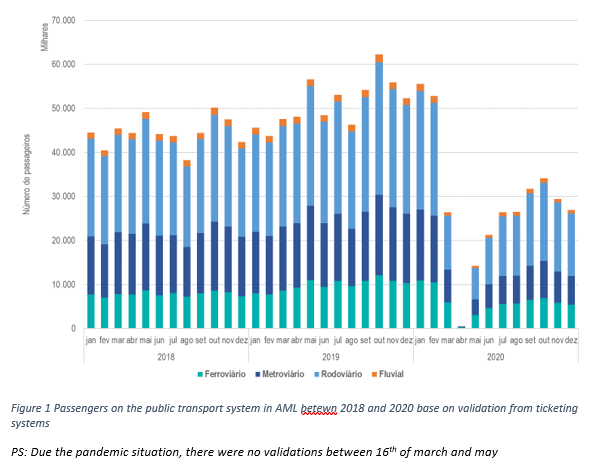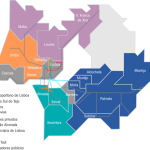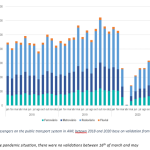Lisbon : Public transport networks
The supply
In what concerns public transport modes and operators, AML is served by:
- a train network that links Lisbon city centre with some of the other AML municipalities and with the rest of the country operated by two operators, one private and one public;
- 2 metro networks, one in the centre of Lisbon with links to its surroundings operated by a public company and another in south side of the river operated by a private company;
- ferries that connect the opposite banks of the river operated by 2 public companies;
- bus network operated by 3 public (including the municipal company Carris that operates in the city of Lisbon) and 9 private companies.
In 2020, AML launched a tender for contracting public bus service which contemplates the redesign of the network with an increase of 40% in the offer. The services will start to be operated in 2021 by four different companies each one with a dedicated zone of operation. Together these operators will provide a new service characterized by renewed fleet (average age of less than 1 year) including clean and energy efficient vehicles that are also adapted to people with reduced mobility and for the transport of bicycles.

The demand
The AML region has a high use of car (around 58%) and has witnessed in the last years a worsening of this situation with the detriment of more sustainable modes of transport, until the implementation of measures by AML such as the integrated fare system, Navegante.
Since the Navegante implementation in April 2019, the number of passengers had an increase of 15% going from 534.544 passenger in 2018 to 614.173 in 2019 The most used mode by far is the bus, followed by the subway, the train and the ferry with 55%, 34%, 22% e 4% of the demand in 2019. However, with the pandemic, the number of passengers dropped significantly, having come to recover and reach values of up to 60% of the previous demand.


